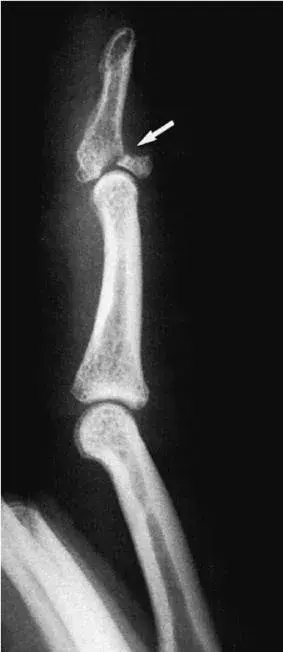Answers:
(a) Ruptured hemorrhagic ovarian cyst with continued bleeding, ruptured tubo-ovarian abscess, tubo-ovarian torsion
(b) Ruptured tubo-ovarian abscess, ruptured hemorrhagic ovarian cyst with continued bleeding, ruptured ectopic pregnancy
(c) Tubo-ovarian torsion, ruptured tubo-ovarian abscess, ruptured ectopic pregnancy
(d) Ruptured ectopic pregnancy, tubo-ovarian torsion, ruptured hemorrhagic ovarian cyst with continued bleeding
The correct answer is (b) - ruptured tubo-ovarian abscess, ruptured hemorrhagic ovarian cyst with continued bleeding, ruptured ectopic pregnancy.
The failure rate on this question is around 50% for first time encounters with the question, with the most common incorrect answer being (c). When we see high incorrect rates like that, we re-evaluate the question to see if it is confusing, incorrect, or if it is not making question’s learning objective clear.
In this case, it’s a good question. We’re going to call the miss rate “Ovarian Torsion Bias”. We’d make an acronym, but it’s medicine, the acronym is probably already taken. 😀
The problems and point of the question are three:
- Does the student interpret rapidly life-threatening correctly? Are they distinguishing between urgent and lethal?
- Residents are frequently taught about common and memorable emergency conditions. Tubo-ovarian torsion, while failing to meet the lethality criteria, is something the residents know.
- Missing nuances in question phrasing (or chart phrasing). The ovarian cyst has continued bleeding, meaning a high hemodynamic risk.
You could argue that a tubo-ovarian abscess is just a complication of pelvic inflammatory disease, but you’d be failing to recognize the septic shock risk when the abscess rupture. The quesiton, which looks simple, is really about the extent to which the student understands the underlying pathophysiology.
Why This Question Is Often Missed
- Students conflate all “ruptured” adnexal processes—failing to distinguish hemorrhagic (cyst, ectopic, abscess rupture) from non-hemorrhagic ischemic torsion.
- The prominence of torsion in EM teaching leads examinees to over-include it among acute, life-threatening pelvic emergencies.
What the Distractors Indicate
| Option | What It Tests / Implies | Why It’s Wrong Here |
|---|---|---|
| (a) | Recognition of hemorrhagic ovarian cyst and TOA rupture vs torsion | Omits ruptured ectopic pregnancy—the quintessential hemorrhagic emergency. |
| (b) | Correct trio of hemorrhagic emergencies (TOA rupture, hemorrhagic cyst, ectopic) | ✔ Includes all three classic hemorrhagic pelvic emergencies. |
| (c) | Differentiation of torsion, abscess rupture, ectopic | Replaces hemorrhagic cyst with torsion; TOA rupture is purulent, not primarily hemorrhagic. |
| (d) | Inclusion of ectopic, torsion, hemorrhagic cyst | Omits ruptured tubo-ovarian abscess—another source of rapid intra-abdominal bleeding. |
High-Yield Pearl
In any childbearing-age woman with acute pelvic pain and hypotension, prioritize the “hemorrhagic triad”: ruptured ectopic pregnancy, hemorrhagic ovarian cyst, and ruptured tubo-ovarian abscess.
Core Learning Objectives
- Identify and differentiate the three primary hemorrhagic gynecologic emergencies.
- Distinguish hemorrhagic adnexal processes from ischemic (torsion) or infectious-purulent presentations.
The “Test Trick” at Play
All answer choices mix three conditions—two hemorrhagic and one non-hemorrhagic—so the trap is recognizing the unifying theme (rapid hemorrhage) rather than simply “three bad things.” Torsion is an emergency but causes ischemia rather than acute intra-abdominal bleeding, so it’s the out-of-theme distractor.
Additional Practice Questions and Remediation
(Relevant to ABEM Exam Preparation Q&A: Gynecologic Hemorrhagic Emergencies)
Question 1
A 29-year-old woman presents with sudden onset severe left lower-quadrant pain immediately after intercourse. She is pale and diaphoretic; BP 90/50 mmHg. Transvaginal ultrasound shows a complex left adnexal cyst and free fluid in the cul-de-sac. The most likely diagnosis is:
- Ruptured tubo-ovarian torsion
- Ruptured hemorrhagic ovarian cyst
- Tubo-ovarian abscess
- Ovarian torsion
Question 2
A 24-year-old G1P0 at 7 weeks’ gestation arrives with syncope and diffuse abdominal pain. Her vitals: HR 120, BP 80/45 mmHg. Pelvic exam reveals cervical motion tenderness; ultrasound shows no intrauterine gestation and significant free fluid. The most likely cause is:
- Ovarian torsion
- Ruptured hemorrhagic ovarian cyst
- Ruptured ectopic pregnancy
- Tubo-ovarian abscess
Question 3
A 32-year-old with a history of PID and high fever suddenly develops severe lower-abdominal pain and hypotension. Pelvic ultrasound shows a complex tubo-ovarian mass with echoes suggesting debris and fluid. The most likely diagnosis is:
- Ruptured ectopic pregnancy
- Ovarian torsion
- Ruptured tubo-ovarian abscess
- Hemorrhagic ovarian cyst
Question 4
A 27-year-old on anticoagulation for a DVT presents with sudden unilateral pelvic pain and dizziness. BP 85/60 mmHg; ultrasound shows a 5 cm simple cyst and moderate hemoperitoneum. The most likely cause is:
- Tubo-ovarian torsion
- Ruptured hemorrhagic ovarian cyst
- Ruptured ectopic pregnancy
- Tubo-ovarian abscess
Question 5
A 30-year-old G0 presents with acute pelvic pain, hypotension, and a positive pregnancy test. Bedside FAST exam shows fluid in Morison’s pouch. Which is most appropriate?
- A. Emergent laparoscopy for suspected torsion
- B. Intravenous antibiotics for presumed TOA
- C. Immediate surgical management of ruptured ectopic pregnancy
- D. Observation and repeat imaging in 6 hours
Mini Case Discussion Prompt
Compare the initial resuscitation and definitive management strategies for ruptured ectopic pregnancy versus ruptured tubo-ovarian abscess in unstable patients.
This question appears in Med-Challenger Emergency Medicine Review with CME
Try for free and save. Ace your exams and meet your CME/MOC requirements for just $35 a month!








